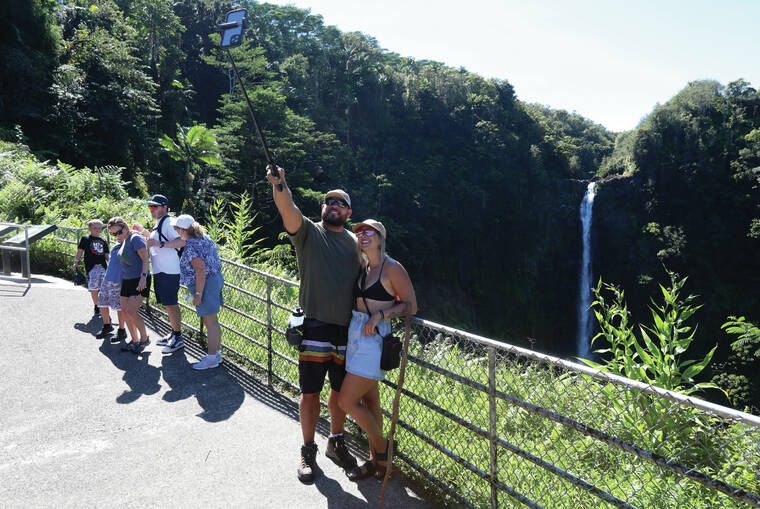International visitors will be allowed to travel to Hawaii under certain conditions starting Monday.
Gov. David Ige announced Tuesday that the state will comply with an order signed by President Joe Biden allowing all adult foreign national travelers to come to the U.S. without exemptions, so long as they provide proof that they have been fully vaccinated against COVID-19 and have a negative coronavirus test taken within three days of boarding the flight.
If a non-U.S. citizen traveling directly to Hawaii from an international destination fails to provide the required proof of vaccination and the negative COVID test, they will be prohibited from boarding their flight to the state.
International travelers who arrive at the state from elsewhere in the U.S. will be treated as a domestic traveler and will be subject to the Safe Travels Hawaii Program, which will remain in effect for the time being.
Under Safe Travels, international domestic travelers can bypass a 10-day quarantine by submitting proof of vaccination or a negative COVID-19 test taken by a trusted travel partner within three days of departure.
Sherilyn Kajiwara, administrator for Safe Travels, said travelers arriving to Hawaii from an international destination will not need to interact with Safe Travels.
“Those travelers do not need to open a (Safe Travels Hawaii) account, and they don’t need to create a trip,” Kajiwara said. “That makes it a lot easier for those traveling from international locations.”
Otherwise, Kajiwara said, domestic travelers will interact with Safe Travels the same as they have been, with one exception: Starting Nov. 8, Safe Travels will accept proof of vaccination for any vaccine approved by the World Health Organization, instead of only those approved by the U.S. Food and Drug Administration.
Ige noted that some countries have not yet lifted quarantine requirements for returning residents. Japan, for example, is exploring whether to allow Japanese citizens to return from international travel in spring 2022 without having to quarantine, Ige said, while South Korea, currently dealing with a COVID-19 spike, has not announced such plans.
However, Ige said he expects the state will still see an influx of international travelers despite the possibility of a quarantine upon returning home.
“We anticipate that there is a lot of interest for international travelers coming to Hawaii, and many of them — at least those coming through the end of this year — are willing to come even if they would be subject to quarantine upon their return,” Ige said.
Meanwhile, U.S. citizens will be able to fly directly to Hawaii from an international destination with slightly looser restrictions.
Citizens can choose to provide either proof of vaccination or proof of a negative COVID-19 test result, but that test must be taken within a single day of boarding the flight. Failure to provide at least one of those documents will prohibit the citizen from boarding the plane.
John De Fries, president and CEO of the Hawaii Tourism Authority, issued a statement Tuesday welcoming the return of international travel.
“We are only able to reopen the visitor industry because of the measures taken by the people of Hawaii throughout this pandemic to keep each other safe and keep our community healthy,” De Fries said. “Thanks to your efforts, we can now continue the work of bringing Hawaii’s economy back to support our local small businesses and kama‘aina working families.”
De Fries added that the recovery of the visitor industry will be a gradual process extending well into 2022 and beyond, and recommended patience as visitors become accustomed to the new guidelines.
Email Michael Brestovansky at mbrestovansky@hawaiitribune-herald.com.


